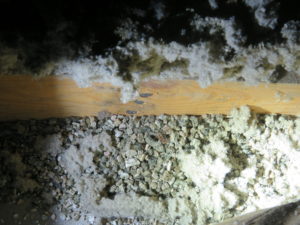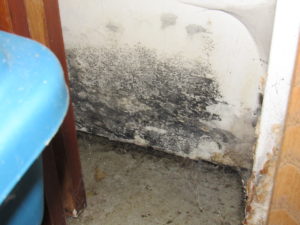Air Quality & Mold Testing
In this day and age, the majority of Canadians spend much of their time inside the comfort of their homes. Many of us, however, do not know the quality of the air we breathe.
The air in our homes can harbor very hazardous passengers, mold spores, bacteria, viruses, allergenic plant fragments, and even asbestos fibers. All these impurities can affect the health of the occupants living inside.

Sick Building Syndrome
Sick Building Syndrome is a real condition and occurs more often than people think. It can affect your health with a variety of symptoms, from irritation of the eyes, throat, nose, and skin, to more serious ones such as hypersensitivity, loss of senses, serious neurotoxic health problems, and more.
Our tests involve sampling the air to check for mold spores and will let you know the type and quantity of mold found in the space. Keep in mind that virtually every building will have some mold, albeit in small quantities — our tests will determine if the quantities are higher than they should be and if any seriously harmful mold exist. We also perform bulk sampling, which is sampling matter that is believed to be mold.
Asbestos
Although asbestos is no longer used in Canadian home building materials, at one point, it was and can still be found in these older buildings. Asbestos can be found in many building materials such as flooring adhesives and materials, drywall mud compound, paint, ceiling stipple, stucco, HVAC duct wrap, and more! Our inspectors can test bulk materials (the compounds mentioned previously) as well as test the air for asbestos fibers.
While asbestosis, a chronic lung disease caused by inhaling asbestos fibers, doesn’t typically appear for many years after exposure, there are no remedies for it. Give us a call to test building materials before any major renovations to determine the presence of asbestos.

Air quality testing is an essential aspect of maintaining a healthy environment within the confines of your home. This process is used to detect levels of contaminants in indoor air, including microbial contaminants, mold spores, and dust mites, which can have a negative impact on the health of your family. With an air quality test, you can determine the presence of these pollutants and the extent of their spread — and take action to eliminate them.Poor air quality can be caused by various factors, including poor ventilation, plumbing leaks, or damp surfaces that act as prime breeding grounds for mold. Indoor air quality testing services are necessary not only to find mold and ensure mold removal but also to prevent the growth of black mold, mildew, and other fungi on materials like drywall and wood. Through a mold remediation process, which includes surface mold removal, homeowners can create an eco-friendly environment free from these harmful contaminants.
Poor indoor air quality inside a home can lead to various symptoms, which indicate the need for air quality testing. For example, prolonged exposure to contaminants can lead to health issues such as respiratory disorders and compromised immune systems. People might also experience allergies, headaches, fatigue, or more severe health conditions due to poor air quality.
Moreover, visible mold growth on walls or the presence of a musty smell can be clear signs of poor air quality. This is often due to moisture buildup and poor ventilation, leading to mold growth that can spread quickly. As a result, mold testing and the remediation process, which involves mold and mildew removal from surfaces, are crucial to maintaining the continued safety of your family. By ensuring mold spores are eliminated, the indoor air quality is improved, providing a healthier and safer environment.
For these reasons and more, air quality testing is not just a measure of comfort — but a necessity for overall well-being.
We Offer Other Quality Home Inspection Services
Mold & Asbestos Pictures








